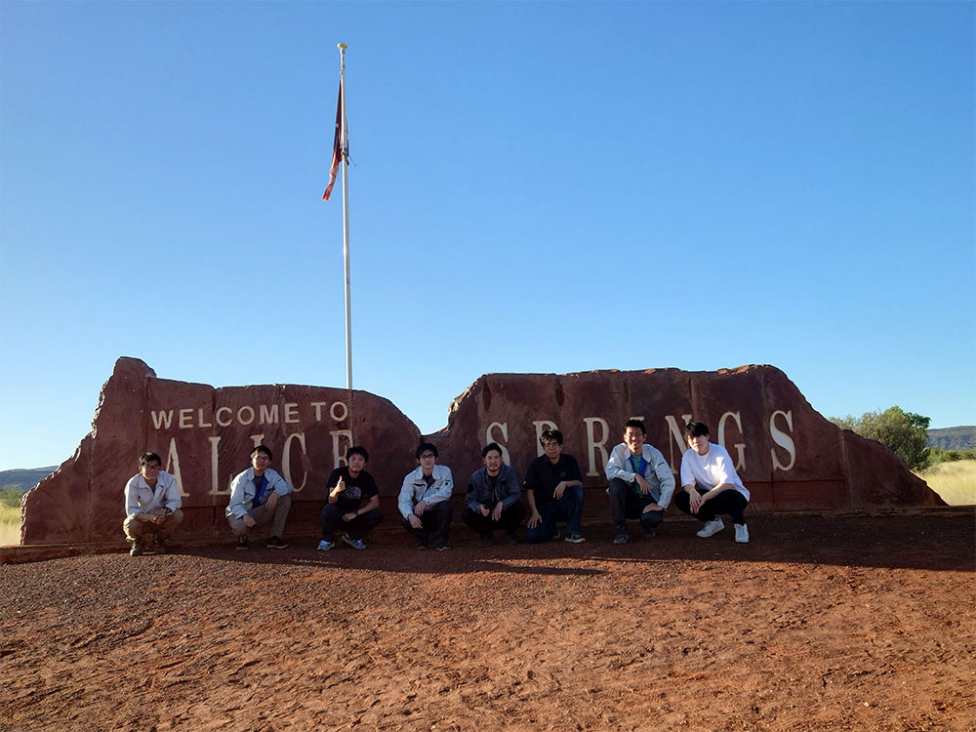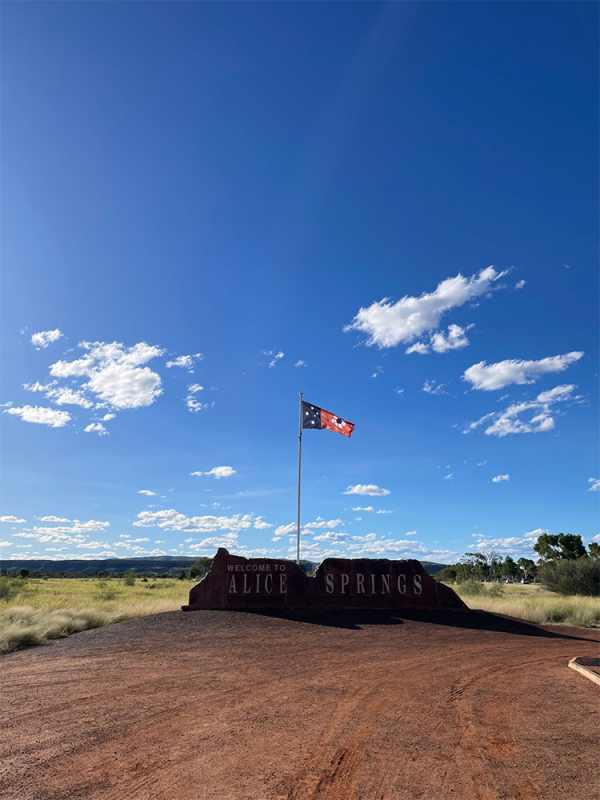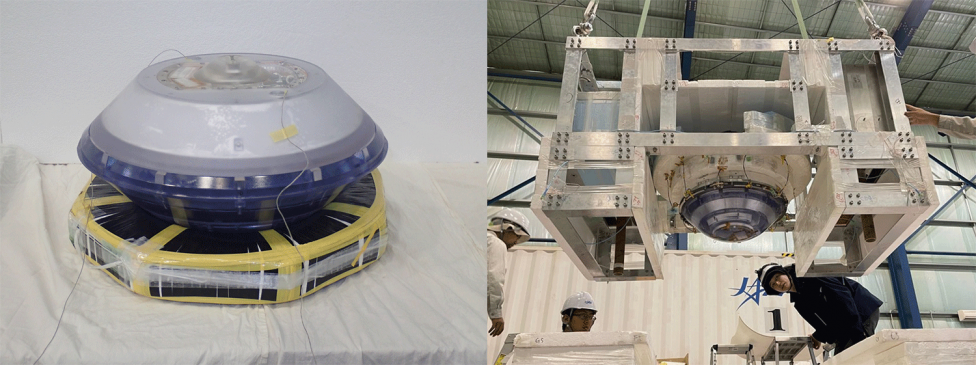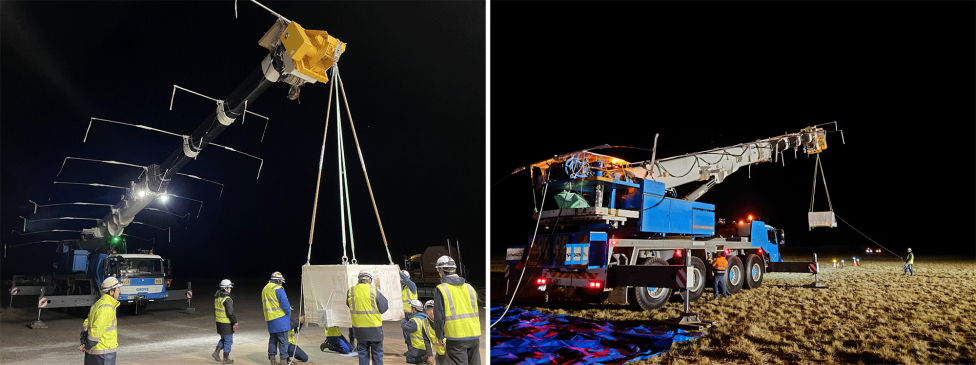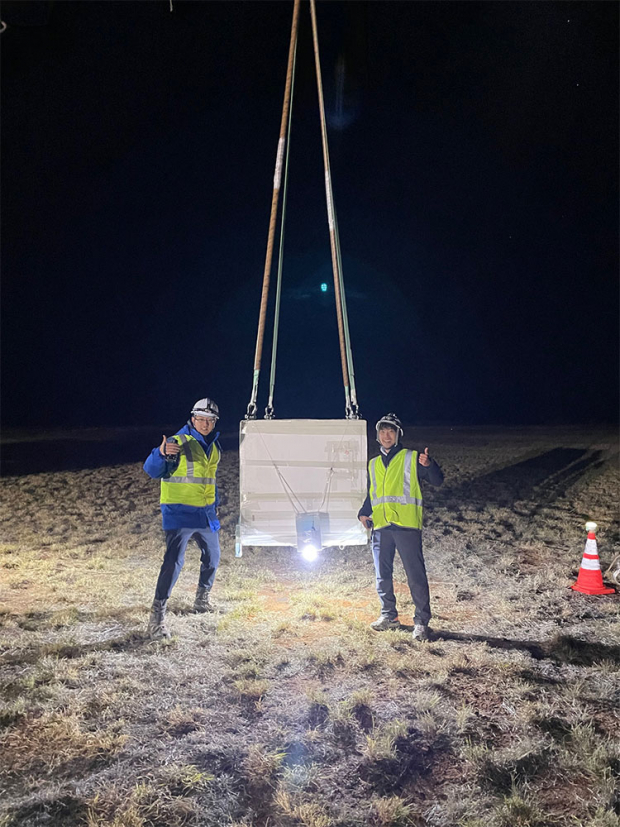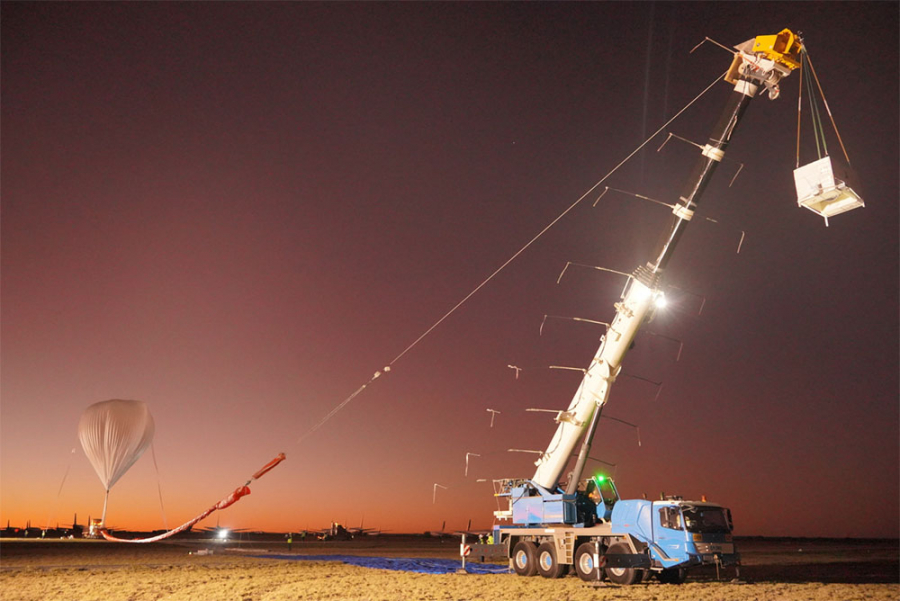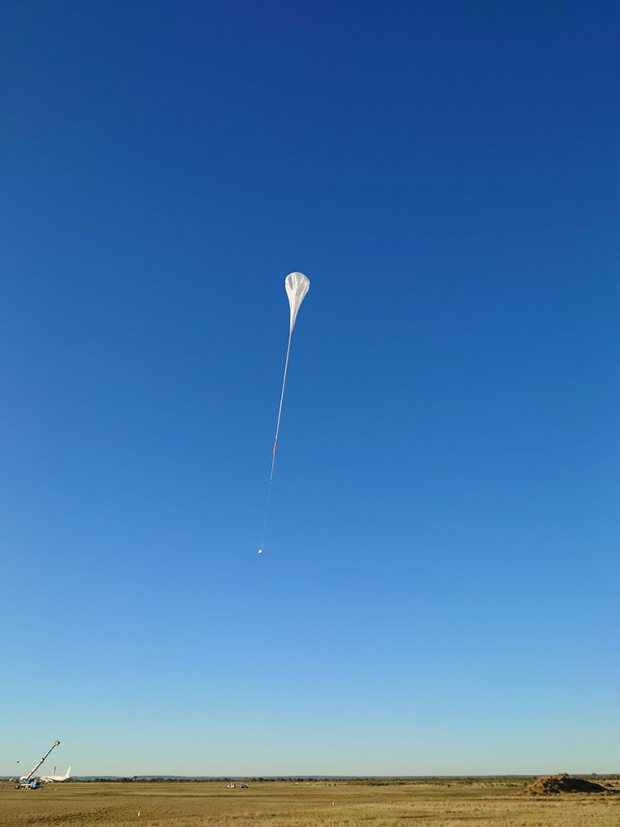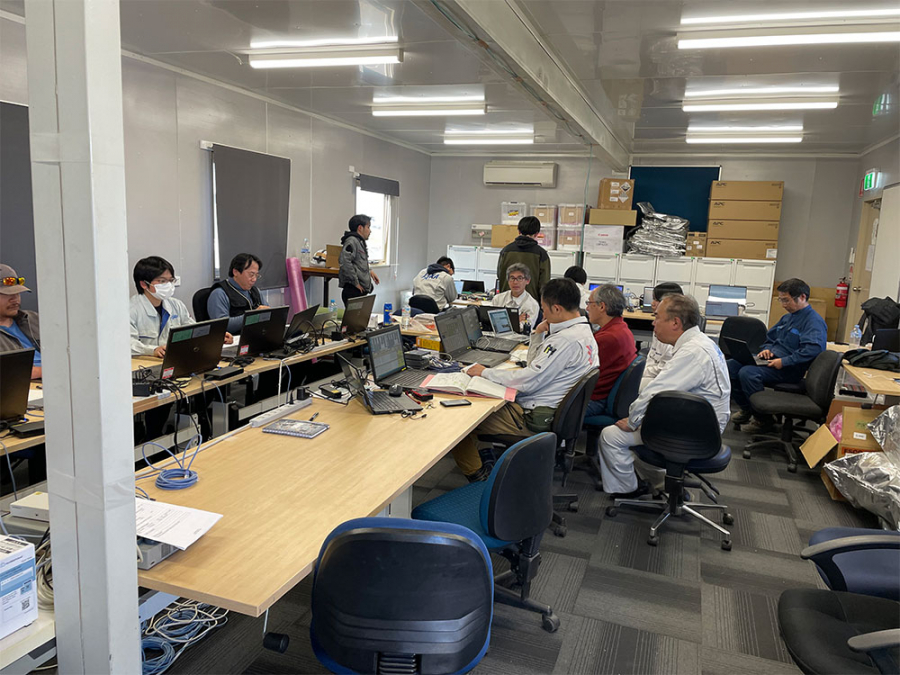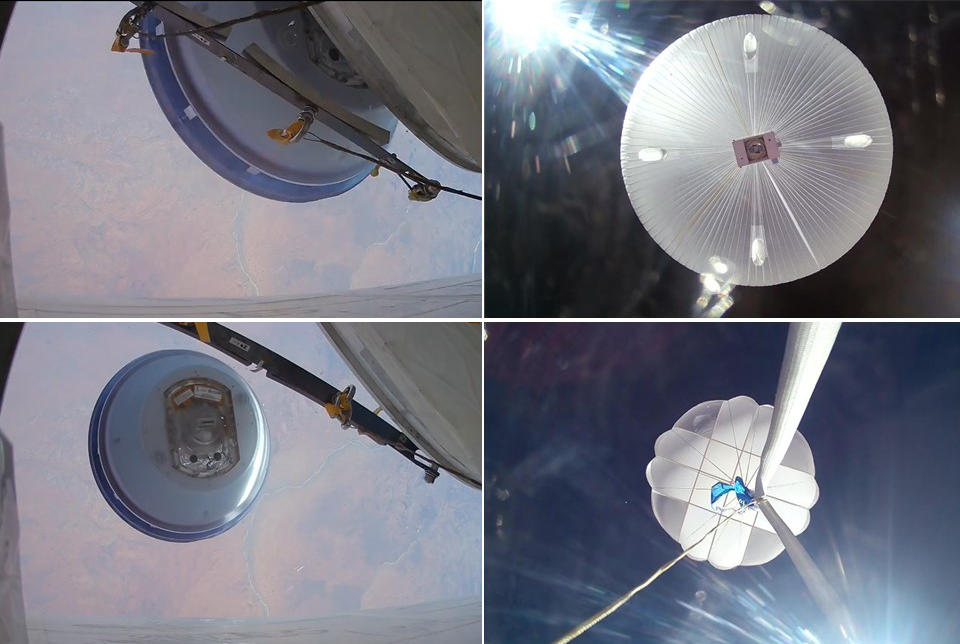The type of sample return mission pioneered by JAXA ISAS with the Hayabusa mission is a pillar for future planetary exploration. A key piece of technology for this mission was the sample return capsule. The sample return capsule carries material collected from distant celestial bodies, and its role is to re-enter the Earth's atmosphere at tremendous speeds and deliver the samples safely to the Earth's surface. Further development of sample return capsule technology is essential if more samples are to be brought back from other distant celestial worlds in the future.
JAXA therefore conducted a free flight test at Alice Springs (a town in the middle of Australia) of a Hayabusa-type sample return capsule (B23-02: Aerodynamic Stability Evaluation of a Hayabusa-type Capsule (SRC) at Transonic and Subsonic Speed Ranges). An experimental sample return capsule was tested that had been enlarged from the 40cm diameter capsule carried by the Hayabusa and Hayabusa2 missions to a diameter of 60cm that would be needed in order to return a larger sample in future missions. The experimental capsule was dropped from an altitude of 40 km, demonstrated stable flight in the transonic regime exceeding Mach 1, and deployed a parachute at a high altitude (approximately 14km).
The monument at the entrance of Alice Springs, where the contrast between the clear blue sky and reddish-brown soil is beautiful. Even though the town is a base for desert (outback) tourism, the surrounding area is rich with greenery. The blue sky, white clouds, red earth, green trees makes a place that is truly Australia.
The experimental Hayabusa-type capsule with a diameter of 60cm (left), which was developed for these tests, and the experimental capsule attached to the balloon gondola (right). During flight, this will be surrounded by Styrofoam.
We arrived onsite in March to prepare the experiment. This is how the experimental capsule was assembled. The parachute, which was important for this test, is being carefully stored in the capsule in the upper-left photo. In addition to the capsule body, a device for separatation from the gondola (upper right) and a device for controlling the balloon are also installed, and then the entire gondola is assembled (lower left). A group photo with the completed gondola is in the lower right!
On May 11, the conditions were right for conducting the experiment and we began. On the day, preparations for the early-morning balloon launch began from midnight on the previous day. The gondola was picked up by the balloon launcher crane (left), which moved it while suspended to the balloon launch pad (right).
At around 3am local time, the operation check of the experimental capsule and gondola were complete. All we had to do was fill the balloon with helium and wait for launch.
Under a beautiful sunrise, we completed inflating the balloon with helium gas and waited for launch. In the bottom left of the photo, the top of the balloon is filled with helium, and in the top right the gondola with the experimental capsule is suspended from the balloon launcher. The length from balloon top to gondola is 100m.
Preparations were complete, and the scheduled launch time arrived, but the direction of the wind on the ground differed from the forecast. As soon as the wind direction recovered, the balloon was released. The night had passed and at 7:39 local time under a clear blue sky without a single cloud, the balloon was successfully launched.
Ballooning experiments take a long time after launch. The capsule is aimed at the planned drop location, and the path of the balloon is controlled by forecasting the high-altitude winds. The photo shows the operation room during the balloon flight. At the back is us, the SRC team, feeling restless. About 3 hours and 45 minutes after the launch, we safely arrived at the place where the capsule may be dropped and sent the command to the gondola to separate the capsule. The experiment has started.
Capsule separation is confirmed via radio transmission. The capsule separates from the gondola and begins to free fall. 115 seconds later, the parachute is deployed, followed at 1,300 seconds by a soft landing. The capsule being dropped was recorded by cameras mounted on the capsule itself and on the gondola. (These images could not be seen in real time, but were confirmed after the capsule and gondola were recovered.)
Upper left/lower left: Capsule being dropped by the gondola
Upper right: the balloon seen from the falling capsule
Lower right: Approximately 115 seconds after seperation, the parachute was successfully deployed.
Since there is a limit to the amount of data that can be sent via telemetry, much of the valuable flight data is recorded on the capsule and gondola. Therefore, the recovery operation greatly affects the success or failure of the experiment. It is the same as with an actual sample return mission. We used GPS and flew a Cessna aircraft to search for the capsule from above. This photo was taken during the Cessna search when the capsule body (instrument module) was found. The white parachute was the landmark that enabled us to find it.
The following day, a helicopter was sent to the site to recover the capsule. This photo shows the capsule body and parachute that were found caught in a tree. The scene reminds us of the recovery from Hayabusa and Hayabusa2!
After this, the rear (left) and front (right) heat shield was also found safely. These were separated when the parachute was deployed, but since they do not emit radio waves to transmit their position, we had to rely on the wind forecasts to find them. We were able to find and recover these thanks to our heritage with Hayabusa and Hayabusa2.
The test was a great success, and as we were able to recover all the items along with valuable flight data, we were able to gain main insights including on capsule recovery. This photo shows the recovered capsule and a group photo of the experiment team members.
I would like to take this opportunity to thank the Balloon Experiment Team, our Australian counterparts, and all those involved for their tremendous efforts in conducting this test.
(2023/06/09)

